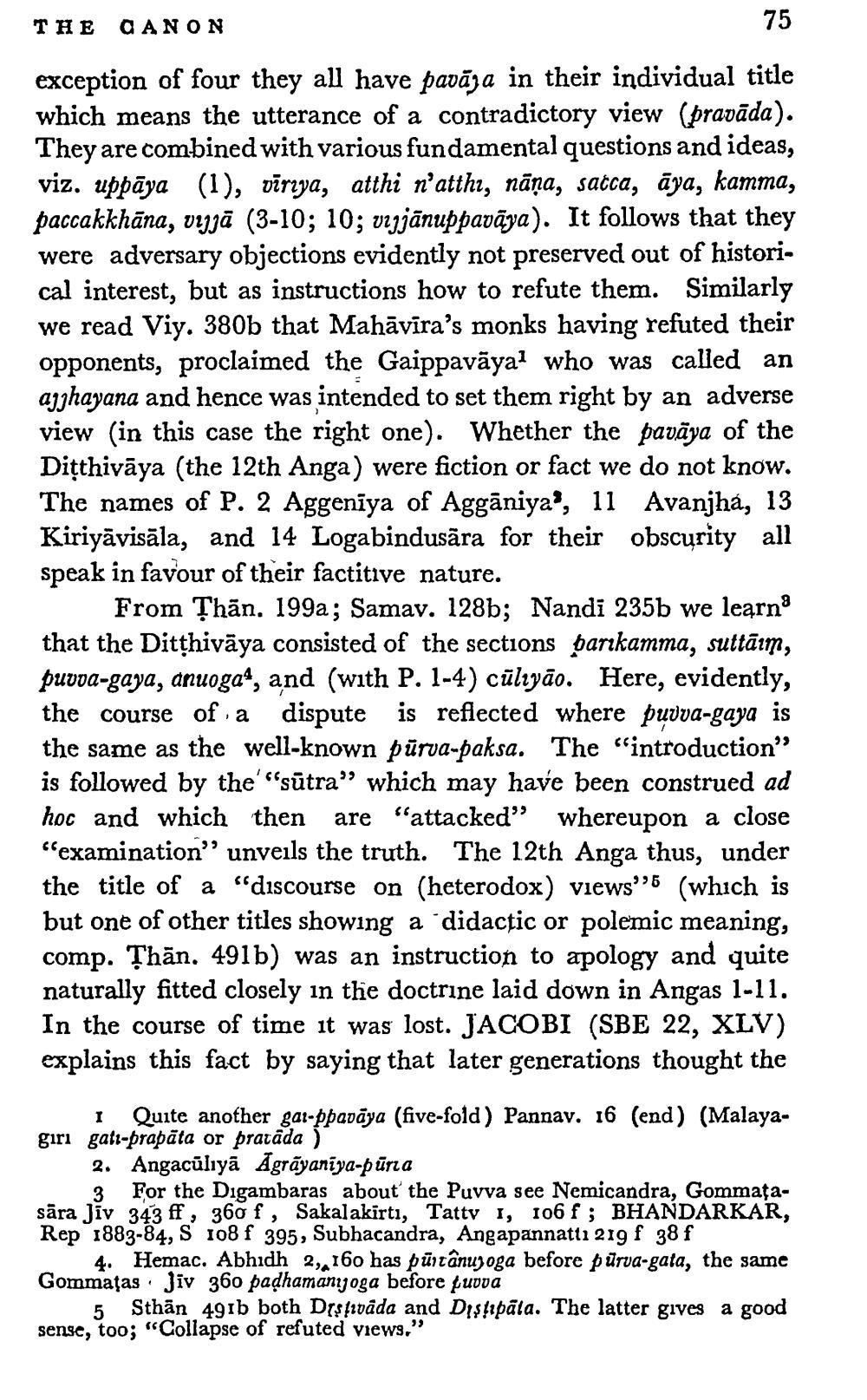________________
THE CANON
75
exception of four they all have pavāja in their individual title which means the utterance of a contradictory view (pravāda). They are combined with various fundamental questions and ideas, viz. uppāya (1), vīriya, atthi n'atthi, nāṇa, satca, āya, kamma, paccakkhāna, vijjā (3-10; 10; vjjānuppavāya). It follows that they were adversary objections evidently not preserved out of historical interest, but as instructions how to refute them. Similarly we read Viy. 380b that Mahāvīra's monks having refuted their opponents, proclaimed the Gaippavaya1 who was called an ajjhayana and hence was intended to set them right by an adverse view (in this case the right one). Whether the pavaya of the Diṭthivaya (the 12th Anga) were fiction or fact we do not know. The names of P. 2 Aggeniya of Aggāniya', 11 Avanjhá, 13 Kiriyāvisāla, and 14 Logabindusara for their obscurity all speak in favour of their factitive nature.
From Than. 199a; Samav. 128b; Nandi 235b we learn3 that the Ditthivaya consisted of the sections parikamma, suttāim, puvva-gaya, anuogaa, and (with P. 1-4) cūlyão. Here, evidently, the course of a dispute is reflected where puvva-gaya is the same as the well-known pūrva-paksa. The "introduction" is followed by the'"sutra" which may have been construed ad hoc and which then are "attacked" whereupon a close "examination" unveils the truth. The 12th Anga thus, under the title of a "discourse on (heterodox) views'' (which is but one of other titles showing a didactic or polemic meaning, comp. Than. 491b) was an instruction to apology and quite naturally fitted closely in the doctrine laid down in Angas 1-11. In the course of time it was lost. JACOBI (SBE 22, XLV) explains this fact by saying that later generations thought the
Quite another gar-ppavāya (five-fold) Pannav. 16 (end) (Malayagiri gati-prapata or pravāda)
I
2. Angaculiya Agrāyaniya-pūria
3 For the Digambaras about the Puvva see Nemicandra, Gommatasära Jiv 343 ff, 360 f, Sakalakirti, Tattv I, 106 f; BHANDARKAR, Rep 1883-84, S 108 f 395, Subhacandra, Angapannattı 219 f 38 f
4. Hemac. Abhidh 2,160 has puntanuyoga before purva-gata, the same Gommatas Jiv 360 paḍhamanyoga before puvva
Sthan 491b both Drshivada and Distipata. The latter gives a good sense, too; "Collapse of refuted views."
5
"




